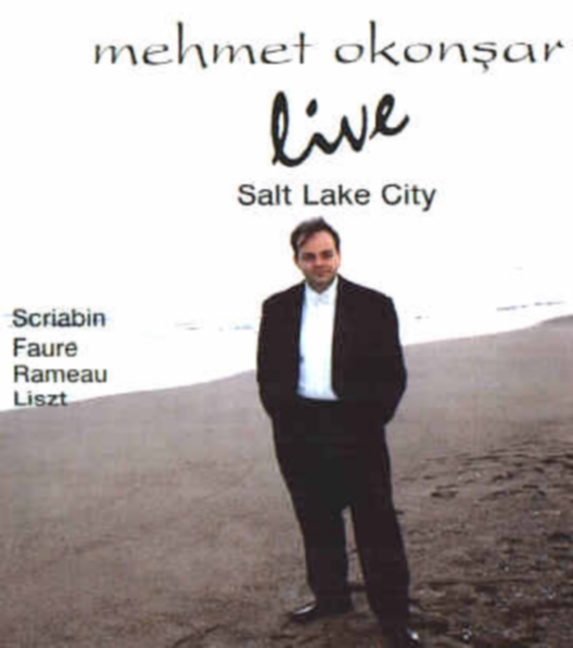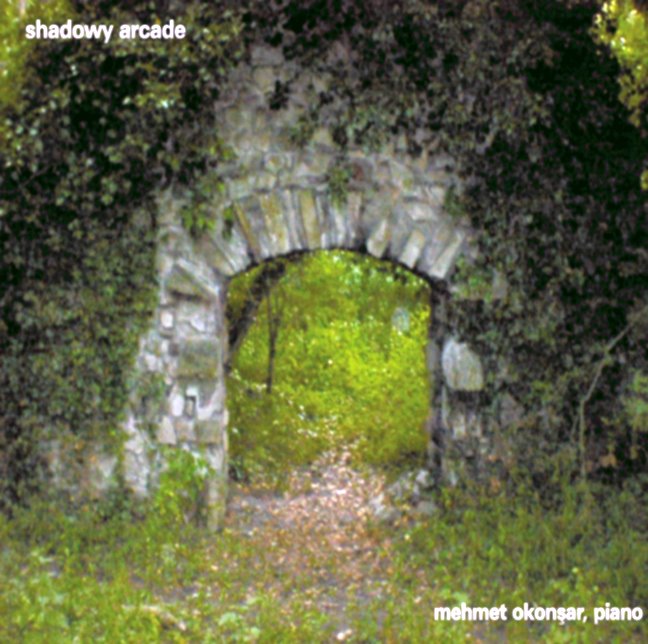
Pierre Boulez, Composer, Conductor And Music Thinker
The
life and career of Pierre Boulez. One of the most important figures in
today's music.

J.S. Bach "Musikalische Opfer"



Recital: "Live at Salt Lake City"

J.S. Bach The Goldberg Variations

Piano Solo Improvisations: "Shadowy Arcade"
All CD's can be auditioned entirely and freely at their respective pages. Click on the images.

J.S. Bach The Goldberg Variations

Piano Solo Improvisations: "Shadowy Arcade"
All CD's can be auditioned entirely and freely at their respective pages. Click on the images.
He attended the Summer School for New Music in Darmstadt, Germany and grew to become familiar with Karlheinz Stockhausen, Luciano Berio, along with other youthful avant-garde composers who have been to produce musical styles for the following two decades.
In 1946, Boulez worked the classic twelve-tone technique underneath the guidance of Rene Leibowitz. Like a student and after, Boulez showed a lot of admiration to modern-day artists of numerous specialties, which includes Klee, Mondrian, Joyce and Becket.
Musically his favorites included Messiaen, Debussy and Stravinsky. Boulez freely acknowledged their influence upon art his art.
Boulez, always a man of strong opinions, brought a protest against Igor Stravinsky's neo-classic music and was among the first French composers to consider Arnold Schoenberg's twelve-tone approach to composition.
Just like a victorious military speeding across enemy terrain, Schoenberg's disciples pressed ever further the master's twelve-tone techniques. Why must serialism be restricted to notes where there have been a lot of additional factors of music to become introduced in check?
Pierre Boulez was the one who brought the charge, and that he extended the serial way to pitch, rhythm, timbre and dynamics; taking serialism where Schoenberg most likely by no means meant it to go.
In 1953, he founded a contemporary music concert series that later grew to become the "Domaine Musical". Through the next decade, he trained at Basel College as well as in Darmstadt and would be a going to professor at Harvard College. He later became a member of the faculty in the College de France.
After embracing orchestra conducting, initially being an hobby, Pierre Boulez, composer was selected by famous George Szell within the mid-sixties, as the Cleveland Orchestra's guest (principal) conductor to ensure that Szell's audiences would have the ability to hear large doses of twentieth-century music that Szell himself felt beyond his grasp as a conductor.
Boulez's Cleveland recording of Stravinsky's "The Rite of Spring" from that point revealed the piece with a clearness and energy that forever transformed how a public considered that music.
Pierre Boulez like a conductor directed the majority of the world's leading symphony orchestras and ensembles from the late fifties to our day. He offered at the same time as musical consultant from the Cleveland Orchestra from 1970 to 1972, chief conductor from the BBC Symphony Orchestra from 1971 to 1975, and music director from the New York Philharmonic from 1971 to 1977.
He's presently the Conductor Emeritus from the Chicago Symphony Orchestra, after getting been its Principal Guest Conductor. The orchestras that has directed range from the Berlin and Vienna Philharmonics, the London Symphony Orchestra, the Orchestre de Paris, the Ensemble Inter-Contemporain, the Mahler Chamber Orchestra. In 2005 he started a collaboration using the Staatskapelle Berlin.
Pierre Boulez can also be an articulate, intelligent and sweeping author on music. Others worked with questions of technique and aesthetics inside a deeply reflective, sometimes elliptical manner, Boulez on the contrary, was always crystal clear.
His writings have mostly been republished underneath the titles "Stocktakings from an Apprenticeship", "Orientations: Collected Documents", and "Boulez on Music Today", as with the journal from the Darmstadt composers of that time: "Die Reihe". Another edition from the French texts, with formerly uncollected material, has made an appearance underneath the title "Points de repere I, II, and III."
Pierre Boulez is among the most significant musical and intellectual figures from the 20th century. Like a composer, he authored a brand new chapter within the history of music in the fifties, particularly with "Le Marteau sans Maitre" (1953-55), a synthesis of numerous different streams in modern and world music including Balinese, African and Japanese.
Pierre Boulez is really a ceaseless questioner. His refusal to prevent and settle lower having a given solution complements a restless perfectionism. This creative doubt may also appear, at first glance, to contradict the supreme confidence Boulez gives his roles as both composer and conductor. Yet such dichotomies are integral to Boulez's musical thinking, producing the strain which has made him this type of an effective leading force from the postwar avant-garde.
Like a composer and musical thinker, Pierre Boulez is modernism's prominent heir, and, like a conductor of preternatural capabilities using the world's great orchestras under his baton, he's been busy getting within the modern harvest in music of unique authority.
Schoenberg, Berg, and Webern happen to be spirited compositions with an insider's revelatory touch, and also the enthusiastic collector may have adopted his Bartok series believe it or not acutely: "Duke Bluebeard's Castle", "The Wooden Prince", "Cantata Profana" and also the Concerto for Orchestra amongst others.
Usage rights:
You can use
this article under the Creative Commons License CC-BY. This license
lets you distribute, remix, tweak, and build upon my work, even
commercially, as long as you credit me, by displaying the information
on me given below verbatim for
the original article.
Mehmet
Okonsar is a
pianist-composer-conductor and musicologist. Besides his international
concert carrier he is a prolific writer. Founder of the first classical
music-musicology dedicated blog-site: "inventor-musicae"
as well as the first classical-music video portal: "classical videos".
